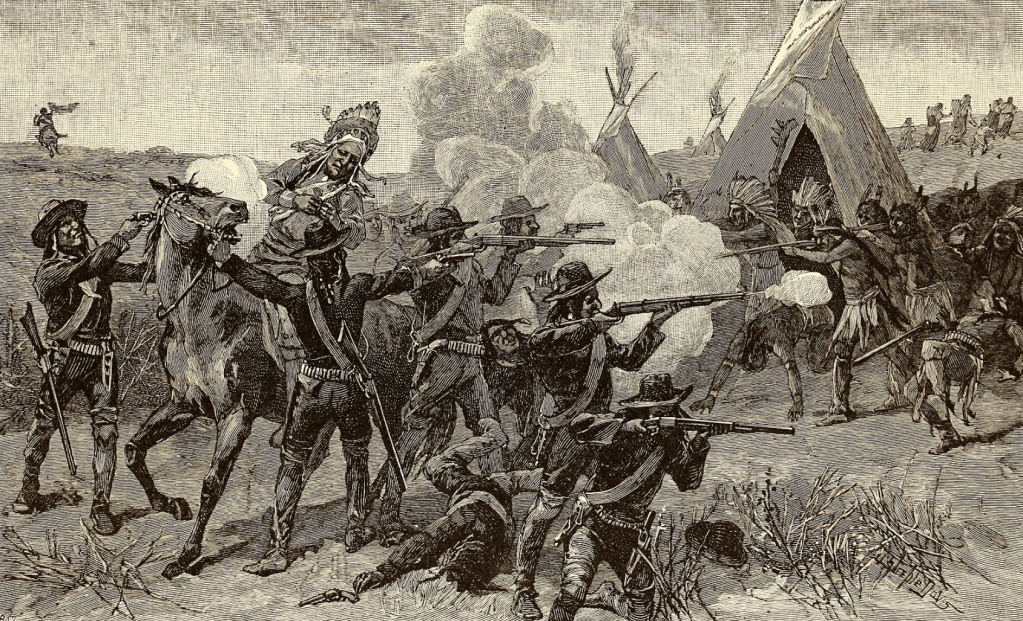In 1863, the Civil War was reaching its height and both sides were losing thousands of men they couldn’t afford to lose. Their recruits not only fell in battle, they succumbed to disease, malnutrition, and above all, desertion. President Abraham Lincoln was struggling to keep what was left of the Union together, but he was stuck between the Army’s demand for more soldiers and politicians complaining about an unpopular draft.
Lincoln began looking for new recruits wherever he could find them. This included former slaves, free Black men, and even Confederate prisoners. Disillusioned with the Confederacy’s version of democracy and ready to get out of Union prisoner-of-war camps, hundreds of rebel prisoners were more than ready to swear allegiance to the United States and help end the Civil War.
Six regiments of the U.S. Volunteer Infantry would earn their nickname, “Galvanized Yankees” during the Civil War. They came from a number of POW camps, including Rock Island, Illinois, Point Lookout, Maryland, Alton, and Camps Douglas, Chase, and Morton in Ohio and Indiana. They stood guard over the Oregon Trail in Nebraska, and kept an eye on intercontinental telegraph lines. They were sent to Nebraska, Wyoming, Idaho and Montana to guard civilians building roads. Scouting and wagon train escorting were part of their regular duties.
One of the regiments stands out above all others. The 1st U.S. Volunteer Infantry Regiment was recruited from Point Lookout Prison Camp in Maryland. Six companies would spend the last two years of the war in Wisconsin, the Dakota Territory and Upper Missouri regions, protecting civilians from hostile Native tribes and fending off vicious tribal attacks while fighting scurvy and the harsh winter climate.
After being recruited in April 1864, the former rebels were sent to Virginia and North Carolina to work provost marshal duties. Gen. Ulysses S. Grant decided to send the men away from the captured southern territory and into Wisconsin and Missouri. The six companies sent to Missouri eventually marched to Fort Rice in the Dakota Territory, where the Yellowstone River meets the Missouri River, where they completed a new fort in the middle of winter.
The winter was harsh, killing 29 men and inflicting freezing wounds on the Southerners. When Spring came it brought with it a declaration of war from the Yanktonai and Lakota Sioux tribes. It turns out the fort had been built on the Natives’ hunting grounds. With more settlers pouring in every month, the tribes felt their way of life was threatened. They raided livestock, attacked work details and randomly shot at the soldiers. The soldiers tried to keep the peace but eight of them were killed in action. Union Army retaliatory attacks didn’t help the situation.
Gen. Alfred Sully led a party toward Devil’s Lake (in what is today Wisconsin) in pursuit of the hostile Natives. Less than a week after his Indian Expedition left Fort Rice, a force of 500 Lakotas, Cheyennes, and Upper Yanktonai attacked the fort from the opposite direction. It may not have been the pitched Civil War battles featuring tens of thousands of soldiers, but the Galvanized Yankees were fighting for their lives all the same.

The warriors attacked the fort from three sides. Though surprised, the 1st U.S. Volunteer Infantry managed to get inside the fort and man its swivel guns, which gave them a circular view of the battlefield. These field guns were also pushed out of every opening, rapidly firing into the swarming Natives. Despite the technological advantages, the warriors managed to get close enough to fight hand-to-hand.
In the end, an estimated 20 warriors died with one U.S. Volunteer killed. They chased the Natives for another ten miles to ensure the raid was over. It was far from the last one. The raids continued well after the !st U.S.V.I. regiment was drummed out of the service in July 1865. As the former rebels returned home, they could be proud they kept the Missouri open while protecting traders, steamboats and Indian Agents when no one else could.

